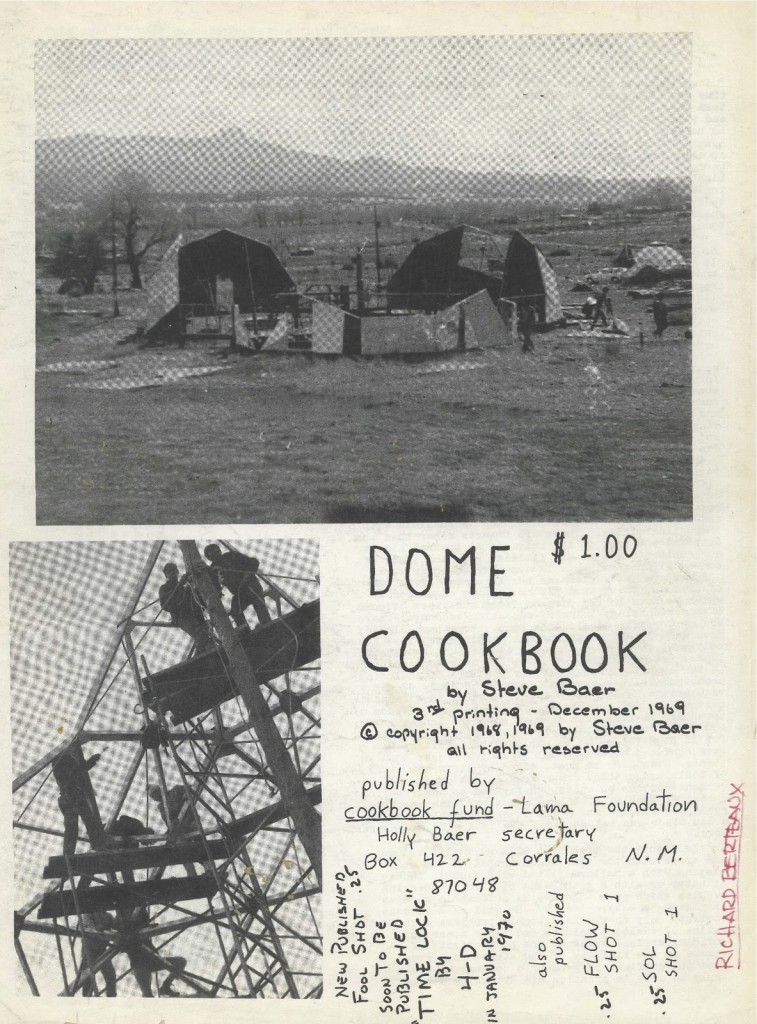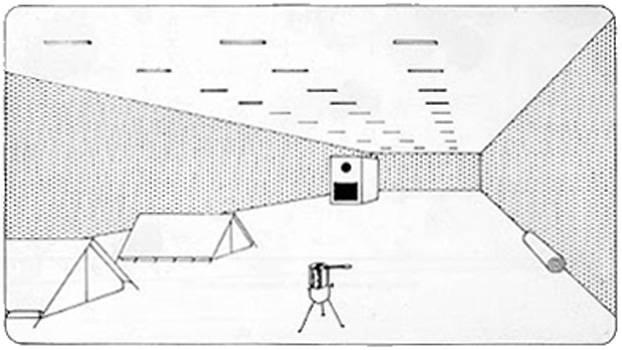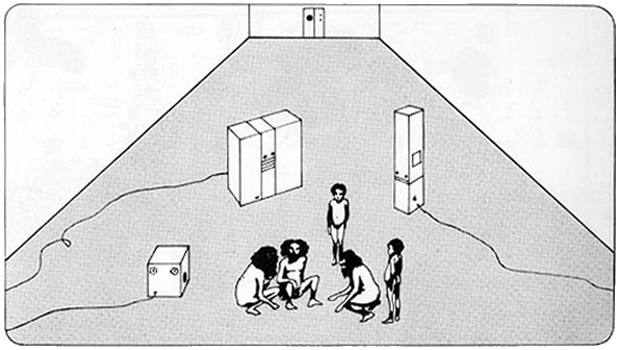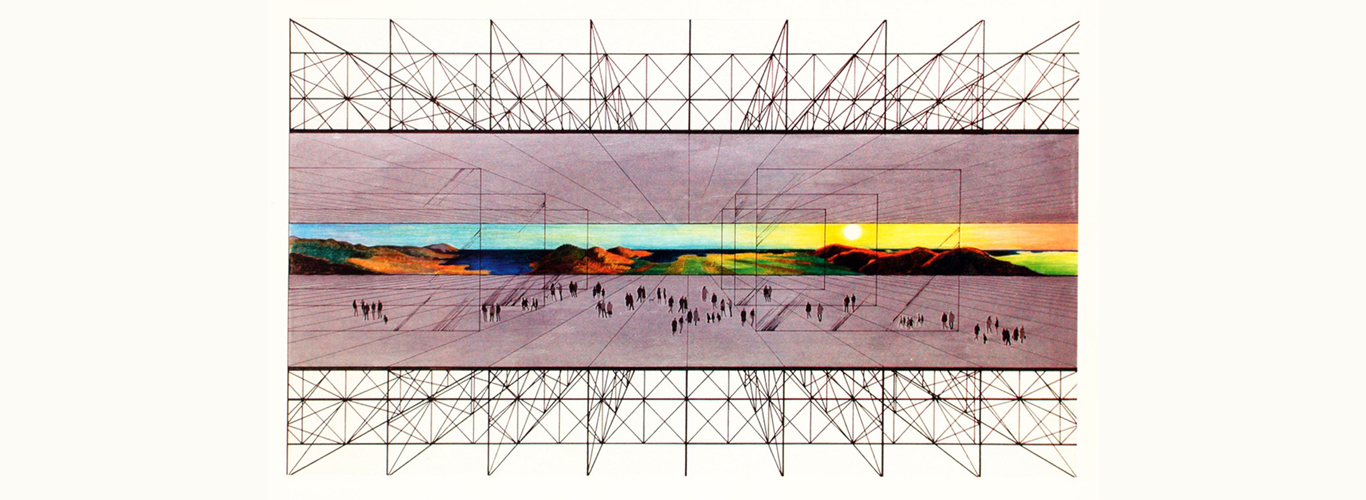All posts taged as “Data” on fabric | rblg, which acts as my survey & resources website.
IICloud(s) – Inhabiting and Interfacing the Cloud(s)
A joint design research project (HES-SO) between ECAL, HEAD, EPFL-ECAL Lab & EPFL
-
-
Note about “Cookbooks”
“Cookbooks” will mostly consist of (technical) tips and advises in the form of “recipes” dedicated to designers, student-researchers and/or makers.
The main purpose of these guidelines will be to help the design community gain access to open cloud technologies and grasp the tools, so to develop their own projects. We’ll select a few of these technologies during our project and try to share what we’ll learn.
“Recipes” will also consist in descriptions about the ways to use libraries, APIs and/or other artifacts that will be developed or used in the context of this research project.
Any desire to build your own dome in the manner of Buckminster Fuller and start your commune? A “Dome Cookbook” in DIY mode by Steve Baer, directly coming out from the Drop City experience, Trinidad USA, 1969.
So to say, we simply envision the I&IC “Cookbooks” as an “Access to tools“ and as an obvious tribute to these historical references, so as the ones who followed.
It could lead to some kind of manual of best “open procedures” at the end of the research, or to some kind of kit.
-
I&IC – Preliminary and then edited Bibliography, Webography
Note: this is the bibliography that helped us set up the research project, taken out from the I&IC -Preliminary Intentions document. We’ll certainly complete it along the way so as possibly document in more details some of the most important resources later (i.e. Clog, 2012). This means that this list might change along the way for our own cross posts references.
-
Bibliography, Webography
Augé, M. (1992). Non-lieux, introduction à une anthropologie de la surmodernité, Le Seuil.
Bar, F. Pisani, F., & Weber, M. (2007). Mobile technology appropriation in a distant mirror: baroque infiltration, creolization and cannibalism. Prepared for discussion at Seminario sobre Desarrollo Económico, Desarrollo Social y Comunicaciones Móviles en América Latina. Convened by Fundación Telefónica in Buenos Aires, April 20–21, 2007.
Banham, R. (1984). The architecture of the Well-Tempered Environment, The University of Chicago Press.
Bathia, N. & al. (2013). Bracket [goes soft], Actar.
Blum, A. (2012). Tubes: A Journey to the Center of the Internet.
Bourriaud, N. (2009). Radicant, pour une esthétique de la globalisation, Denoël.
Branzi, A (2006). No-Stop City: Archizoom Associati, HYX.
Bratton, H.B. (2016). The Stack, On Software and Sovereignty, MIT Press.
CLOG, (2012). Data Space, Clog online.
Divers (2002). Living in Motion, Design und Architektur für flexibles Wohnen, Vitra Design Museum.
Donaghy, R. (2011). Co-opting the Cloud: An Architectural Hack of Data Infrastructure. Graduate thesis work.
Glissant, E. (1990). Poétique de la relation. (Poétique III), Paris: Gallimard.
Himmelsbach, S. & Mareis, C. (2015). Poetics and Politics of Data. The Ambivalence of Life in a Data-Driven Society. Christoph Merian Verlag.
Hu, T.-H. (2015). A Prehistory of The Cloud, MIT Press.
Léchot-Hirt, L. (2010). Recherche-création en design. Modèles pour une pratique expérimentale. Genève: Métis Presses.
Mejias, U. A. (2013), Off the Network, Disrupting the Digital World. University of Minnesota Press.
Open Compute Project/Facebook. (2012). Deploying OCP Hardware in a Collocated Facility.
Rifkin, J. (2012). La troisième révolution industrielle. Comment le pouvoir latéral va transformer l’énergie, l’économie et le monde, Les liens qui libèrent.
Serres, M. (2011). Habiter, Le Pommier.
Shepard, M. (2011), Sentient City: Ubiquitous Computing, Architecture, and the Future of Urban Space, MIT Press.
Ulrberger, A. (2013). Habiter les aéroports, Paradoxe d’une nouvelle urbanité. Métis Presses.
Varnelis, K. (2009). The Infrastructural City: Networked Ecologies in Los Angeles. Actar.
Varnelis, K. (2007). ETHER : One Wilshire, In Sumrell, R. & Varnelis, K., Blue Monday: Stories of Absurd Realities and Natural Philosophies, Actar, pp.48-89.
Weiser, M. (1991). The Computer for the 21st Century. Scientific American, vol. 265, no. 3, pp. 66–75.
-
I&IC – Preliminary intentions
The following text was written as a description of our goals later in 2013, prior to the start of the project. The structure of the text follows the given guidelines. So to say, to get financing.
It is nonetheless a blueprint of what we intend to do and is published on the I&IC blog as a matter of documentation.
—
Inhabiting and Interfacing the Cloud(s)
An intredisciplinary design research project under the co-direction of Prof. Patrick Keller (ECAL) and Nicolas Nova (HEAD). With the support of HES-SO and the collaboration of ECAL, HEAD, EPFL (Prof. Dieter Dietz) and EPFL+ECAL Lab (Dir. Nicolas Henchoz).
This design research project explores the creation of counter-proposals to the current expression of “Cloud Computing”, particularly in its forms intended for private individuals and end users (“Personal Cloud”). It is to offer a critical appraisal of this “iconic” infrastructure of our modernity and its user interfaces, because to date their implementation has followed a logic chiefly of technical development, governed by the commercial interests of large corporations, and continues to be seen partly as a purely functional, centralized setup. However, the Personal Cloud holds a potential that is largely untapped in terms of design, novel uses and territorial strategies. Through its cross-disciplinary approach, our project aims at producing alternative models resulting from a more contemporary approach, notably factoring in the idea of creolization (Glissant, 1990). From a practical standpoint, the project is intended to produce speculative versions of the “Personal Cloud” in the form of prototypes (whether functional or otherwise) of new interfaces, data processing, reactive environments and communicating objects. To do this, the project will be built around three dimensions forming the relevant pillars of a cross-disciplinary approach: interaction design, the architectural and territorial dimension, and the ethnographic dimension.
-
ECAL / M&ID
ECAL / Media & Interaction Design
—
Prof. Patrick Keller
Co-Head of the I&IC design research.
Patrick Keller is Professor at the University of Art & Design, Lausanne (ECAL) where he teaches design in the Media & Interaction Design unit. He was in charge of this unit between 2001 and 2004. In 2007, he led the design research Variable_Environment that united designers from ECAL and scientists from EPFL (design & sciences research).
Patrick is a founding member of fabric | ch, a studio for architecture, interaction and research. As part of his activity as creative director for the studio, he formulates new space proposals that combines digital, physical and environmental dimensions. Oscillating between devices, installations, experiments and productions, the work of the collective has been exhibited and published internationally, so has presented in numerous talks.
Patrick Keller studied architecture at the Swiss Federal Institute of Technology, Lausanne (EPFL) where he graduated in 1993 (M.Sc) and in Berlin. He then continued his education in the research labs of the EPFL with a postgraduate in Computer Graphics (Mas). Patrick worked at the EPFL as a research assistant where he contributed as a designer on several research projects between 1996 and 2000, before formally founding fabric | ch in 2001.
-
Contact: patrick[dot]keller[at]ecal[dot]ch
-
HEAD / MD
—
Prof. Nicolas Nova
Co-Head of the I&IC design research.
Nicolas Nova is Professor at the Geneva University of Arts and Design (HEAD – Geneva) and founder of the Near Future Laboratory, a design studio based in Europe and California. His work is about identifying weak signals as well as exploring people’s needs, motivations and contexts to map new design opportunities and chart potential futures.
Nicolas has given talks and exhibited his work on the intersections of design, technology and the near-future possibilities for new social-technical interaction rituals in venues such SXSW, AAS, O’Reilly Emerging Technology Conference and the design week in Milano, the Institute for the Future, the MIT Medialab.
He holds a Phd in Human-Computer Interaction from the Swiss Institute of Technology (EPFL, Switzerland) and was previously a visiting researcher at the Art Center College of Design (Pasadena, CA). He is also curatot for Lift Conference, a series of international events about digital culture and innovation.
-
Contact: nicolas[dot]nova[at]hesge[dot]ch
-
EPFL / Alice
EPFL / ALICE – Atelier de la conception de l’espace
Prof. Dieter Dietz
Educated at the Swiss Federal Institute of Technology, Zurich (Arch. Degree 1991), Dieter Dietz also studied at the Cooper Union in New York with Diller/Scofidio. Since 2006, he is Associate Professor for Architectural Design at EPFL, director of the ALICE laboratory in the ENAC faculty. He collaborates with the ALICE team on research projects at diverse scales with labs inside and outside EPFL.
-
Contact: dieter[dot]dietz[at]epfl[dot]ch
-
EPFL + ECAL Lab
Nicolas Henchoz
Based in Lausanne, the EPFL+ECAL Lab was founded by Nicolas Henchoz in 2003 to explore the potential of emerging technologies. Its mission is to foster innovation at the point where technology, design and architecture overlap.
Under Nicholas’s direction The Lab’s activities are focused on three main concerns. First, to develop practical, real-world applications for technologies developed in the scientific labs. Secondly, to drive innovation by widening the scope of designers’ work. Thirdly, to form new links and develop synergy between researchers and wider society seeking technological and other innovative solutions.
One key area of exploration is augmented reality which developed into an exhibition, Gimme More, in New York earlier this year. It is part of a project aiming to better understand how augmented reality can be developed into a medium in its own right.
Nicholas Henchoz’s teaching and research concerns include augmented reality, innovation management and material science. He has been named among Bilan’s “300 Most Influential People in Switzerland”. The EPFL+ECAL Lab is a unit of the Ecole polytechnique fédérale de Lausanne – Europe’s leading research & development university – in co-operation with the Ecole Cantonale d’Art de Lausanne.
-
Contact: nicolas[dot]henchoz[at]epfl[dot]ch
-
Partners
Guest Researchers, Practitioners & Thinkers (in order of appearance)
—
James Auger (Auger-Loizeau), London – workshop #2 at HEAD
James Auger has a BA in Product Design from Glasgow School of Art and an MA in Design Products from the Royal College of Art. Between 2002 and 2005 he was employed as a research associate at Media Lab Europe, where the main focus of his research was a design-based investigation into technology-mediated human interaction. He then worked at the Issey Miyake Design Studio in Tokyo as guest designer. Since 2005 he has been teaching and continuing his research in the Design Interactions programme at the RCA.
James is also a partner in the Speculative Design practice Auger-Loizeau, whose projects have been published and exhibited internationally, including MoMA, New York; 21_21, Tokyo; The Science Museum, London and the Ars Electronica festival, Linz, and are part of the permanent collection at MoMA. In 2003 James was awarded the Köln Klopfer International Designer of the Year by the students of KISD in Germany. James Auger is an external examiner at Edinburgh College of Design, visiting professor at HEAD – Geneva, and on the judging panel of IF Design awards.Matthew Plummer-Fernandez (#Algopop), London – workshop #3 at ECAL
British/ Colombian Artist and Designer Matthew Plummer-Fernandez makes work that critically and playfully examines sociocultural entanglements with technologies. His current interests span algorithms, bots, automation, copyright, 3D files and file-sharing. He was awarded a Prix Ars Electronica Award of Distinction for the project Disarming Corruptor; an app for disguising 3D Print files as glitched artefacts. He is also known for his computational approach to aesthetics translated into physical sculpture.
For research purposes he runs Algopop, a popular tumblr that documents the emergence of algorithms in everyday life as well as the artists that respond to this context in their work. This has become the starting point to a practice-based PhD funded by the AHRC at Goldsmiths, University of London, where he is also a research associate at the Interaction Research Studio and a visiting tutor. He holds a BEng in Computer Aided Mechanical Engineering from Kings College London and an MA in Design Products from the Royal College of Art.
Dr. Christian Babski (fabric | ch), Lausanne – developer
Christian Babski is lead programmer and co-founder at fabric |ch, a studio for architecture, interaction and research based in Lausanne, Switzerland.
As scientist, Christian Babski takes part in the technical and software development of research projects within the group. Through experimental projects, he developed specific skills in interfacing heterogeneous systems/mechanism/hardware by achieving specific software libraries in numerous distinct programming languages. Therefore, he is used to manage computer hardware, sensors, mobile devices as well as network and online technologies or services.
Christian Babski holds a Phd in Computer Graphics from the Swiss Federal Institute of Technology (Lausanne), where he was involved into several European research projects. He previously graduated in Computer Science (Ma) in Dijon (France), prior to finalizing a Master of Science (M.Sc) in Lyon (France)/Geneva (Switzerland).-
Contact: christian[dot]babski[at]fabric[dot]ch
Dev Joshi (Random International), London – workshop #5 at ECAL
Dev Joshi is Head of Technology at contemporary art studio Random International. Having trained in product design engineering he has spent the last five years at Random finding ways to bend technologies and systems for use outside their usual arenas. In addition to his work in the arts, Dev has recently launched Headless Ghost, a Kickstarter funded display emulator and is CTO at Product Laboratories Limited – developers of Rain Cloud, a connected weather device. Focusing on hardware and humans, Dev enjoys exploring the interface between people, objects and the behaviors of both as well as how technology can be used to convey information across the fields of art and science for both practical and emotional expression.
Sascha Pohflepp, Cologne – workshop #6 at HEAD
Sascha Pohflepp is a German-born artist, researcher and writer whose work has been known to probe the role of technology in our efforts to understand and influence our environment. His interest extends across both historical aspects and visions of the future and his practice often involves collaboration with other artists and researchers, creating work on subjects ranging from synthetic biology to geo-engineering and space exploration. Notable exhibitions include Talk To Me at MoMA New York, Hyperlinks at the Art Institute of Chicago, Micro Impact at the Boijmans Van Beuningen Museum Rotterdam, Pre-History of the Image at STUK Kunstencentrum Leuven, Science Fiction: New Death at FACT Liverpool and an online project for opti-ME* at Auto Italia South East in London. Sascha’s work has earned two Honorary Mentions from the VIDA Art and Artificial Life Awards and in June 2015 was shortlisted for the Berlin Art Prize.
-
I&IC, formats, recommandations image sizes, posts, etc.
A few indications regarding format, syntax, image sizes on the website and blog, Categories and Tags, etc.
Language for posts should be english. But we can also publish in French from time to time, especially if posts are intended for us (research team). Nonetheless, as the blog’s purpose is to show our process and then possibly use these posts to produce a printed documentation, english remains preferable.
-
Images:
For the horizontal “slide show” on the home page: 1366 x 500 pix max. or proportional.
-
In general, for pictures published on the blog (as galeries): 1366 pix. wide max (or less).
This size guarantees a good quality in case we would display the website full screen (fullHD, with margins). If your image is not intended to be displayed full screen, then a smaller resolution is possible.
If you believe that the picture you’re publishing might be print-published later and that we don’t have stored another better copy (a print-on-demand publication with selected content might be realized at the end of the research project), you can double its size. But keep in mind that mostly (if not only) the pictures taken by a photographer might be published full size in the end. The other ones will serve the purpose of documentation (therefore, 1366 pix. printed in 300 dpi still make a ~11cm wide image and could be sufficient).
-
All pictures should be uploaded in the Media section (edited, caption added if necessary). This will be our backed up reservoir.
-
Galleries should be created by 1° defining a new post / 2° For this post, define a Gallery format on the right side of the screen (Format) / 3° Choose Grid or Slideshow –we’ll rather use grid galleries for posts — / 4° Go to Media, upload and comment/edit your media, then attach these media to your post, from the same Media interface. Note that these images will also appear as “carrousel” in lightboxes at their best resolution.
—
Video:
We have a dedicated Vimeo account (Pro) where our videos can be published. Video can then simply be linked: 1° Define new post / 2° Choose Video on the right side of the screen (Format) / 3° Enter the video url in the dedicated field.
—
Links:
Unique links that appear in large orange boxes in teh blog roll: 1° Define new post / 2° Choose Link on the right side of the screen (Format) / 3° Enter the url in the dedicated field. / 4° Add a Featured Image in the dedicated field –if not, your link won’t appear– (note that this image appears then in the different Latest Posts widgets on the site.
-
Don’t forget to add a “Links” tag, among others, so that all links can be easily found.
Note that the “Link” format cannot be used with a “Insert Read More tag” (it looks that this is a bug in the WP Theme).
-
Links should be opened in a separate Tab or Window.
—
Editorial rules:
Try to use existing Categories or Tags when you publish a new post.
-
The People category should be used exclusively with tags an no other category except Schools (i.e. People/Designers+Books+etc.)
-
Resources is for all type of resources & references we publish (technical, projects, books, etc.) To be used mostly with tags and/or combined with Architecture, Art, Design, Interaction Design, Sciences & Technology, Society, Thinking categories.
-
Projects and Workshops categories are exclusively dedicated to the projects that will be developed in the frame of the I&IC research projects. They can be used mostly with tags and/or combined with Architecture, Art, Design, Interaction Design, Sciences & Technology, Society, Thinking categories.
—
Syntax & composition:
Some syntax comes directly with the type of posts/Format: “Gallery” (Format) implies that images appear necessary at the top of the post followed by text, so has “Link“.
-
A Reblog post should be mentioned in the title (Reblog > …). Note: this post can also serve as guideline for standard posts that include text and images.
A personal note in italic (Note: Nam liber tempor cum soluta nobis eleifend … ) can be inserted in the reblog post or other resources, before (or after if it’s a “Link”, a “Video” or a “Gallery”, etc. Format) mentioning the website of the original post so as in all cases its author, if it is known.
-
Other posts are standard posts. Don’t forget to leave a blank line between images and texts or after images legends and add a “Insert Read More tag” after the first paragraph or so, especially in the case of long posts.
-
All initial Categories
Architecture / Art / Cook Books / Design / Ethnography / Interaction Design / People / Projects / Publications / Resources / Schools / Sciences & Technology / Society / Thinking / Uncategorized / Workshops
-
All initial, then edited Tags
2d / 3d / 4d / Academic / Activism / Actual / Algorithmic / Application / Architects / Architecture / Art / Art direction / Artificial reality / Artists / Atmosphere / Automation / Behavior / Beliefs / Biology / Body / Books / Cabinets / City / Climate / Clouds / Code / Cognition / Community / Computing / Conceptual / Conditioning / Conferences / Content / Control / Corporate / Craft / Creolized / Critical / Curators / Customization / Data / Datacenter / Designers / Designers (interaction) / Designers (product) / Designers (visual) / Developers / Devices / Digital / Display / Documentation / Domestic / ECAL / Ecology / Economy / Editions / Electronics / Energy / Engineering / EPFL / EPFL_ECAL_Lab / Ethnographers / Exhibitions / fabric | ch / Farming / Fiction / Food / Form / Function / Furnitures / Future / Gadget / Game / Geography / Globalization / Hack / Hardware / HEAD / Health / History / Housing / Ideas / Information / Infrastructure / Installation / Intelligent / Intentions / Interface / Interferences / Internet / Kinetic / Knowledge / Landscape / Library / Links / Localized / Mesh / Methodology /Neurosciences / Nomads / Object / Open source / Operating system / Participants / Participative / Personal / Philosophy / Photography / Physical / Physics / Physiological / Poetry / Politics / Pollution / Presence / Print / Privacy / Product / Profiling / Programming / Public / Reactive / Research / Responsive / Robotics / Scenarios / Scenography / Scientists / Screen / Security / Sharing / Situated / Sketches / Smart / Social / Sociology / Software / Sound / Space / Speculation / Standards / Statement / Storage / Surveillance / Sustainability / Tactile / Teaching / Territory / Things / Thinkers / Time / Tools / Topology / Tourism / Traces / Ubiquitous / Urbanism / Users / Variable / Vernacular / Video / Virtual / Visualization / Weather / Web
-
Associate Prof. HES Patrick Keller
Related links and documents about Patrick Keller:
_________________________________________
Patrick Keller > Publications, Talks, Exhibitions (2015-2020)
Patrick Keller > Publications, Talks, Exhibitions (1999-2020)
_________________________________________
fabric | ch > CV Studio for Architecture, Interaction & Research



